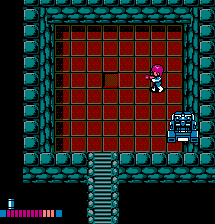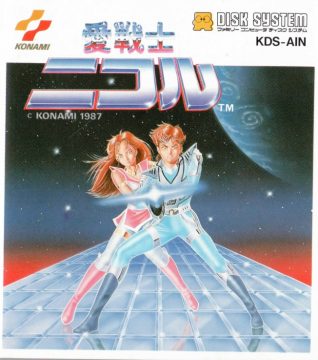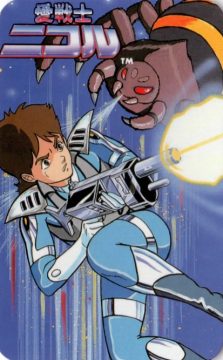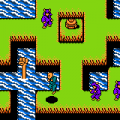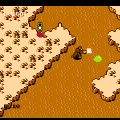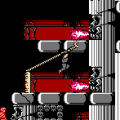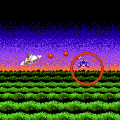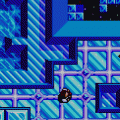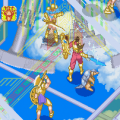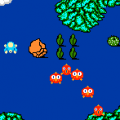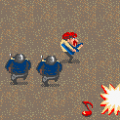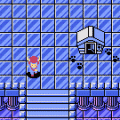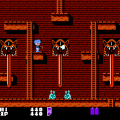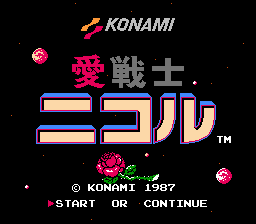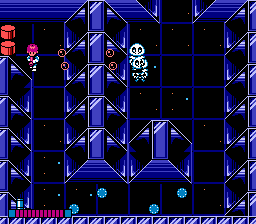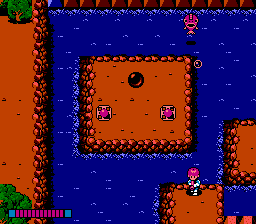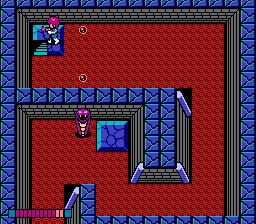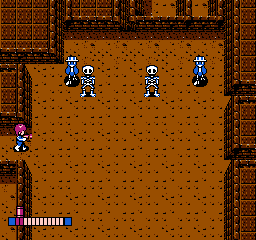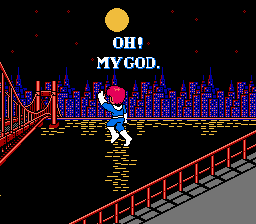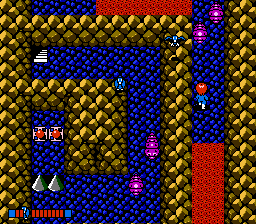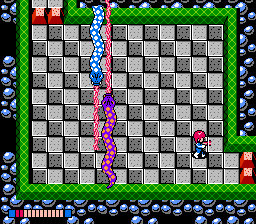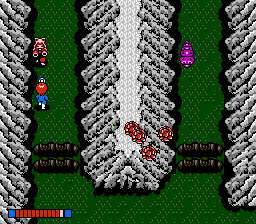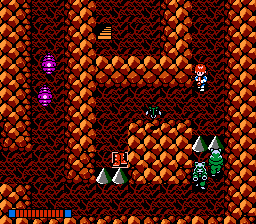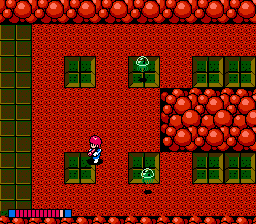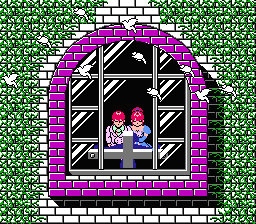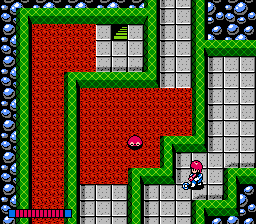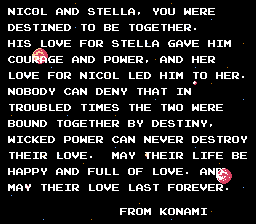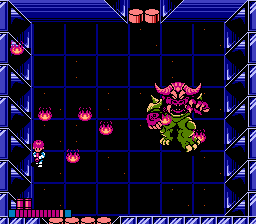Konami’s 1987 Famicom Disk System game Ai Senshi Nicol, or “Love Warrior Nicol”, is comparable to a Zelda or Goemon game. It tells the story of the titular Nicol and his sweetheart Stella, who have invented a machine that can teleport items through different dimensions. Unfortunately, this attracts the attention of the Demon Bull King, who kidnaps Stella in order to get Nicol to turn over the machine. In order to reach the Demon King and get Stella back, Nicol needs to explore seven levels to find the parts to complete the machine. This is only detailed in the manual, as the intro simply shows a scene where a Metroid-like alien nabs Stella while the pair are on a romantic walk, which concludes with some amusing Engrish.
Ai Senshi Nicol plays a lot like the on-foot parts of Blaster Master, except with tighter design and controls. Each level is structured like a Zelda dungeon, flip screen scrolling and all, where you must explore every available area methodically to uncover secrets and open the next path. Your goal in each stage is to collect three diamonds to power your hovercraft, many of which are, naturally, guarded by bosses. It’s all action, though, with nary a block puzzle in sight. Much like Metroid, many power-ups have the double feature of giving you extra power or defense while also acting as a “key” to unlocking a new path, such as a gun that destroys a certain type of block, or shoes that let you jump further.
Throughout each level are pits that drop you into an underground section, most of which are filled with lava/poison lakes, that you must navigate. While they serve as “traps” for mistimed jumps, they’re also part of the level and can contain items. A good percentage of optional power-ups are hidden in random blocks, so you’ll find yourself shooting everything you can in search of a gun upgrade.
The controls are simple and tight, with eight-way directional movement responding well to your inputs, and jumping in particular is handled quite competently and forgivingly for an overhead perspective game. Enemies are usually pretty easy to fight, too. You just have to be patient and take your shots at the right time, and as you’d expect from Konami, bosses are tricky and will most likely get you on your first time out. If you learn their patterns, though, you can get by unscathed.
While it’s hard to get lost in the first couple of levels, as the game goes on, the stages get larger and more involved. You’ll get stuck wondering where to go next, and it can get frustrating as your life bar gets chipped away at by re-spawning enemies as you search an area for the fifth time. However, once you learn a level, you’ll be able to race through the next time.
Ai Senshi Nicol looks fantastic. The colorful, cartoony look is pulled off with panache, and technically it’s well-ahead of its time – despite being released in 1987, it really looks like a late-era 8-bit game. Each level has a consistent theme, with standard 80s representations of futuristic industrial architecture. The sprite work is great, there’s little flicker, and bosses are satisfyingly large.
As you’d expect of a Konami game, the music is also fantastic. Utilizing the extra FDS sound channels to great effect, the catchy soundtrack is right up there with the best on the console. It doesn’t have that relentlessness that characterizes the soundtracks of many of Konami’s action games, and instead matches the cartoony visuals with more light-hearted pieces.
It’s very unfortunate that Ai Senshi Nicol wasn’t released outside of Japan, as it’s a tightly designed game with great graphics. There’s no language barrier at all either, as everything is in English, so feel free to give this lost classic a bash.
